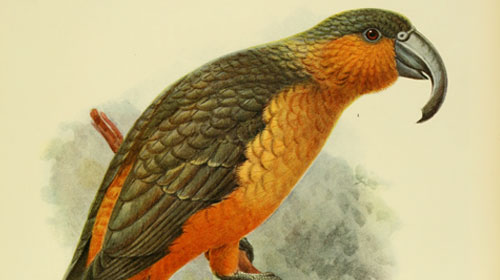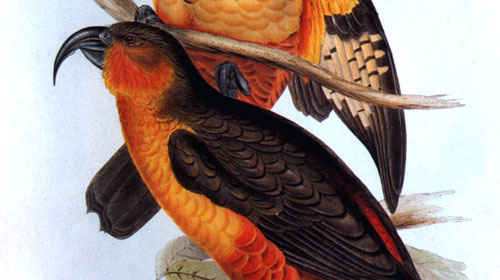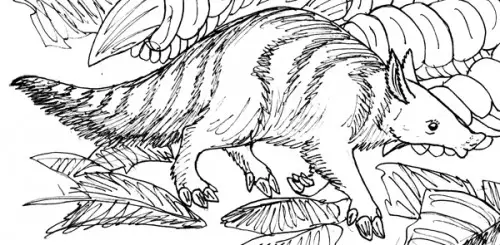Norfolk Island Kākā
An extinct species of parrot and close relative of New Zealand’s Kākā, the Norfolk Island Kākā was a large species of parrot that inhabited the rocky treetops of Norfolk Island and Phillip Island. Said to grow to around 40cm in length these large parrots are still relatively unknown however they were reported to inhabit both trees and ground level environments, feeding directly from flowers and bushes.
The Norfolk Island Kākā was first discovered back in 1774 when James Cook discovered Norfolk Island. Initially the Kākā’s found on Norfolk Island and Phillip Island were believed to be different species, however it was later confirmed that they were indeed the same species after direct comparisons between Kākās from both islands had taken place.

An early portrait of the Norfolk Island Kākā
Not a great deal is known about the life of the Norfolk Island Kākā’s however it is generally assumed that they lived life similar to that of other Kākā species found in New Zealand. The Norfolk Island Kākā was described as making a calling sound that was rough and at times even resembled a dog barking.
The Norfolk Island Kākā is believed to have gone extinct in the wild some time in the 19th century and the last surviving specimen in captivity died in 1851. It is widely accepted that the extinction of the Norfolk Island Kākā was a direct result of human activity with both native Polynesians and European settlers playing a hand in its extinction.

Norfolk Island Kākā's, an artist impression
Before the arrival of European settlers the Polynesian natives did hunt the Norfolk Island Kākā for food however it was by no means a large part of their diet and this hunting probably didn’t put the Norfolk Island Kākā’s under too much threat.
After the arrival of European settlers the Norfolk Island Kākā was once again hunted for food but this time much more frequently. The Norfolk Island Kākā’s were also trapped to be sold as pets and were even hunted for sport. These factors undoubtedly caused serious damage to the population leading to the inevitable extinction.


